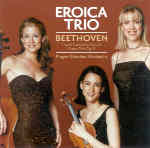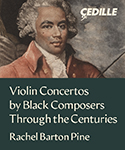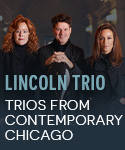Since the late 1950s, EMI has graced the catalog with at least four excellent recordings of Beethoven’s Triple Concerto. This release, however, falls short of its predecessors. On the plus side, the reduced forces of the conductor-less Prague Chamber Orchestra bring a welcome leanness and transparency to scoring that often becomes upholstered and thick in the hands of a baton wielder. The trouble is that the Eroica Trio is so closely engineered that the orchestra virtually disappears (small wonder the Eroica Trio receives top billing on the cover, with the Prague Chamber Orchestra credited in smallest print). It’s almost as if the orchestra and trio had been recorded in two separate locations with differing acoustic perspectives. As a consequence, motivic interplay between the trio soloists and first-chair orchestra members (notably in the first movement) goes for nothing.
Sara Sant’Ambrogio’s uniformly large tone and unvarying vibrato make a strident impression in the extended slow-movement solos that Rostropovich shapes with far more delicacy and control. Plus you hear more bow rosin than actual pitch values in those impossible rapid triplet runs in the finale, where Heinrich Schiff’s effortless technique and gorgeous tone take top honors. More often then not, pianist Erica Nickrenz’s incisive and firmly projected lines are overbalanced by her trio colleagues (try the chains of trills near the first movement’s conclusion for truly skewed balances). In short, you’ll find a higher level of ensemble finesse and soloistic distinction from either Zacharias/Schiff/Hoelscher or Richter/Rostropovich/Oistrakh, also on EMI. In addition, they’re cheaper and better recorded.
Much of the Op. 11 Trio makes a blunt and foursquare impression. Motives seem more hammered out than sculpted (the first-movement development, for instance), and loud tuttis are particularly strident and ugly, emerging as isolated events rather then gathering points in a stream of interactive discourse. As in the Triple Concerto, the strings dominate the piano even when they have accompanying or subordinate material. This upsets the slow movement’s delicate melodic trajectory. The third-movement variations get a particularly tight-fisted, unsupple, and humorless performance that positively pales next to the fleeter, leaner, and playfully inflected Vienna Piano Trio traversal on Nimbus (my favorite version, and well worth tracking down). Should you prefer the work’s original scoring for clarinet, cello, and piano, Martha Argerich and colleagues (also on EMI) boast altogether faster tempos, more characterful playing, and breathtaking cohesiveness.
































